They’re little. They’re furry. They’re social butterflies. They’re pest-control pros. Above all, they’re misunderstood. They’re bats, and it’s their special week! 🦇

That’s right: October 24th–31st every year is Bat Week, an international celebration aimed at reducing the stigma that threatens bats around the world. To join in the batty fun, our Critter Corner this month focuses on the wonderful, wacky flying mammals we have here in Virginia…and how you can help them.

What’s in a name?
Long before we understood taxonomy, humans have been trying to make sense of what the heck bats are. They can fly…but they don’t have feathers. They don’t lay eggs or make nests. They have fur, but they don’t walk or run around all too well like other little furry creatures. They come out at night and sleep upside down. What on earth?! 🤔
In fact, the word for bat in many languages across cultures and history comes from varied attempts to describe these perplexing traits: chauve-souris in modern French (“bald mouse”), fledermaus in modern German (“flutter mouse”), and carmacaṭaka in Sanskrit (“leather-sparrow”), to name just a few. 🐭🪽 Modern English’s “bat” comes from Middle English’s bakke. This traces back to the Old Norse leðrblaka, meaning “leather-flapper.”
While we’re getting nerdy about words: bats are viewed as a good luck symbol in China due in part to the word’s etymology. The Sinitic word for bat is biānfú/蝙蝠. The second syllable is a homophone to fú/福, meaning blessing, good fortune, or bliss. Bats have thus been featured in Chinese art, architecture, and poetry for thousands of years, symbolizing longevity and luck.
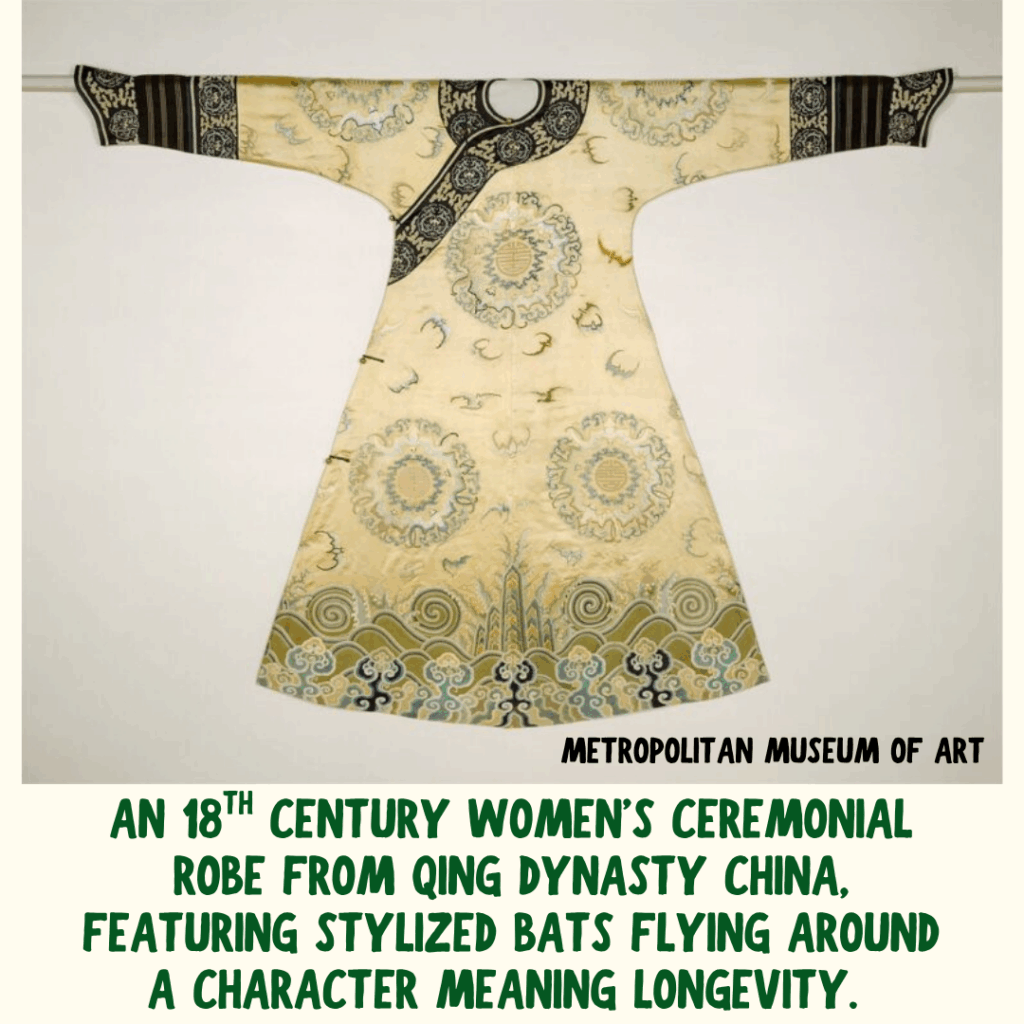
Bats of the World
There are so many different names for bats across cultures because bats live alongside humans in virtually every corner of the world, barring extremely cold climates. Bats make up 20% of the world’s mammal species and are the second largest order of mammals after rodents. In fact, the 1,500th known bat species was officially recognized just last month! Researchers discovered Pipistrellus etula earlier this year in Equatorial Guinea’s Bioko Island. This tiny little species proves that there is still so much to learn about the world’s animals. 🌎
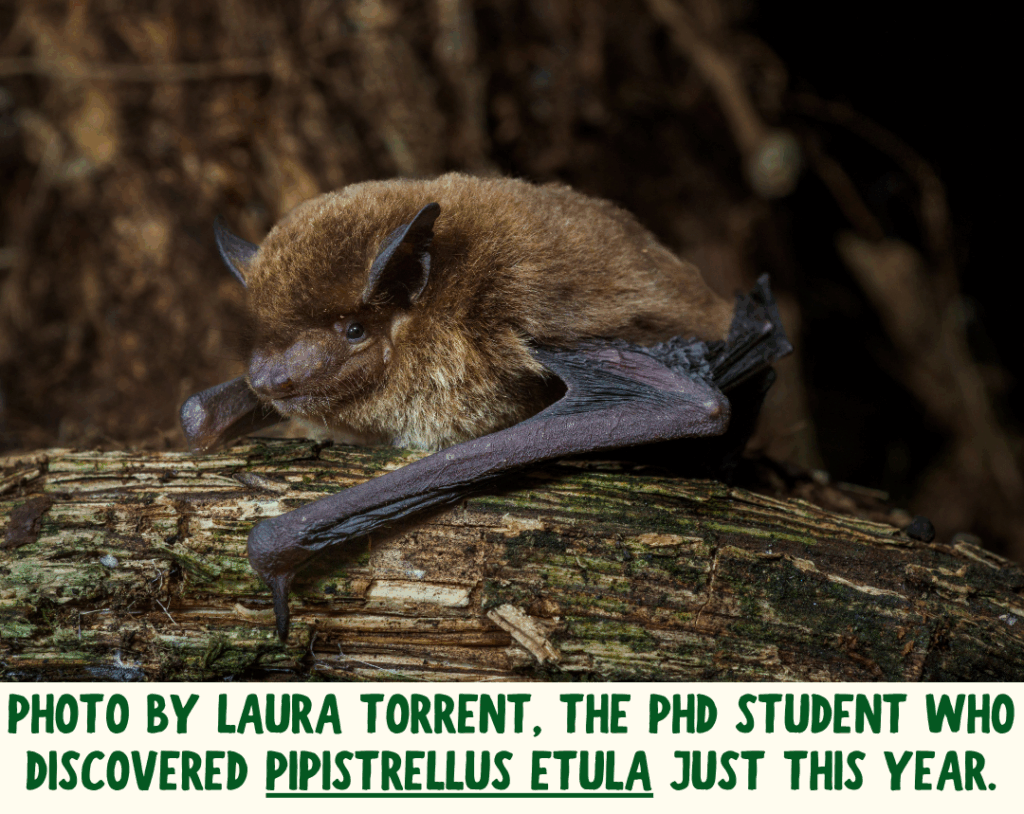
These 1,500 known bat species represent an incredibly diverse array of critters. For example, there are at least 60 species of flying foxes out there, which are fruit-eating bats with impressive wingspans and charming puppy-like faces. The Giant Golden-Crowned Flying Fox, endemic to the Philippines, can have wingspans up to 5.5 feet! On the other hand wing, the world’s smallest bat (and arguably the world’s smallest mammal) is the Kitti’s Hog-nosed Bat from Thailand and Myanmar. Also called the Bumblebee Bat, this teeny creature’s body is just 1-2 inches long and weighs in at a mere 2 grams. That’s the weight of 2 paperclips, for reference. 📎📎
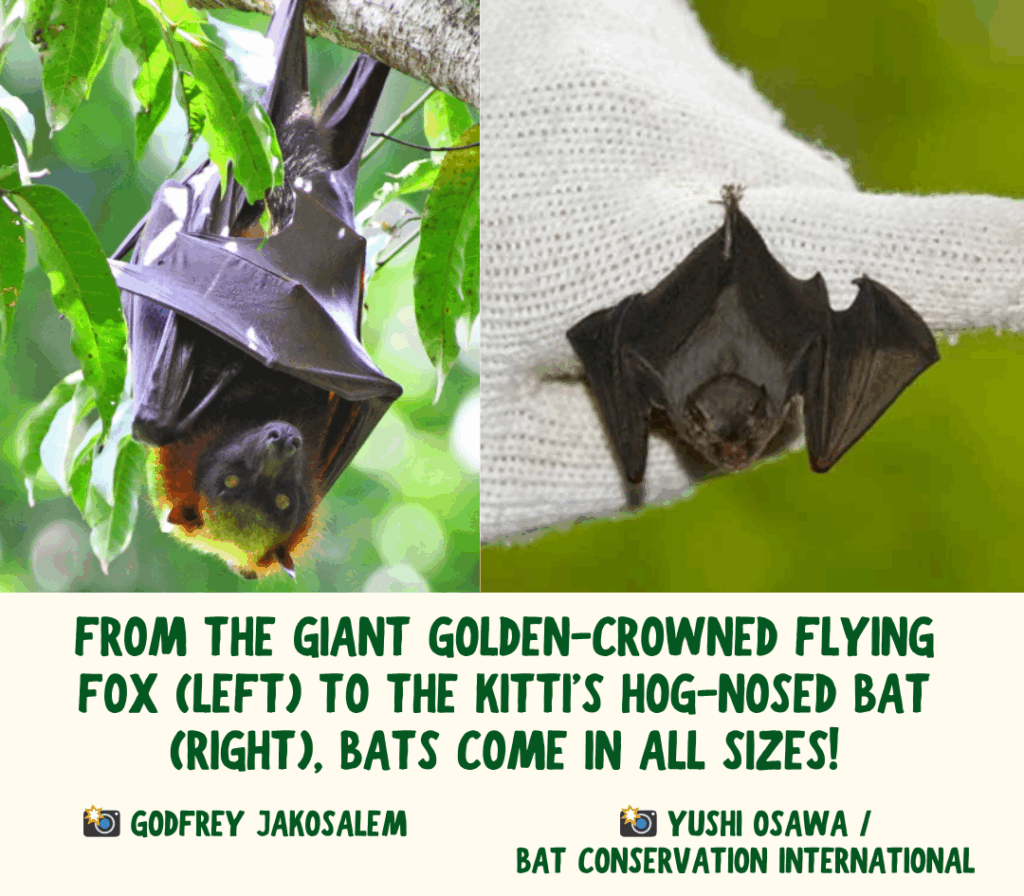
What about Dracula?!
Now, we couldn’t write a newsletter about bats without mentioning vampire bats. 🧛 Based on how bats are portrayed in the media, you might think that there are countless species of vampire bats out there. The reality? There are just three species of vampire bats in the entire world. (None of them live in Virginia, either, just to be clear…though we’ve certainly had folks call our hotline worried about them!) Vampire bats live in Central and South America, and they primarily subsist on the blood of livestock and birds.
Even vampire bats have their charm. They’re known to form decades-long friendships with unrelated individuals, even sharing food with their pals! After forming a social bond by grooming one another, scientists have observed vampire bats regurgitating their meals for their friends who might be having a hard time foraging for themselves. That friend will then return the favor at some point. Kindness isn’t always glamorous, but it’s always heartwarming. ❤️
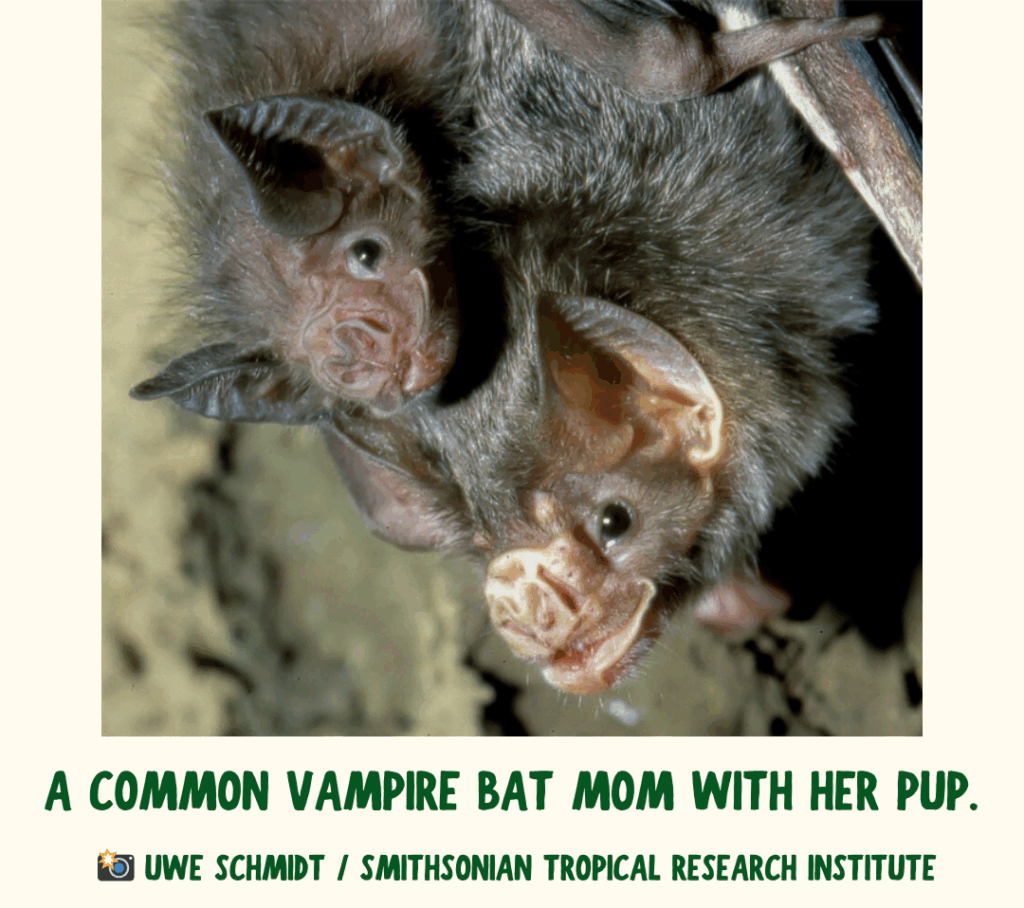
We’ve shared so much about bats from around the world, but what about here in Virginia?
The bats close to home are no less interesting.

Bats of Virginia
While we don’t have flying foxes flitting around the Blue Ridge, we do have 17 different species of bats in Virginia. These include a handful of state- and federally-endangered species like the Indiana Bat and Northern Long-Eared Bat. However, the bats that tend to be more common around human dwellings in Virginia include the Big Brown Bat, the Little Brown Bat, and the Evening Bat. (Leave it to scientists to come up with the most creative names. 😆❤️) As a result, these three species are often the ones we admit for care at Rockfish Wildlife Sanctuary since humans come across them more frequently. We sometimes treat orphaned Eastern Red Bats, too, which we think look a bit like jelly donut holes.

Did you know that we have a state bat? That’s right — Virginia doesn’t just have a state bird (Northern Cardinal) or tree (flowering dogwood). The Virginia Big-Eared Bat is our oh-so-handsome state chiropteran. We’re considering starting a petition to have its regal visage added to our state flag. Just kidding…or are we? 😉

Virginia’s bats — and the vast majority of North America’s bats — are microbats. That just means that they’re itty bitty bug-busting machines that use echolocation to navigate and hunt. They emit ultrasonic calls that bounce off nearby objects and reflect back to them, allowing bats to “see” their environment with sound. It is extremely precise and effective. A Little Brown Bat can eat 1,000 bugs per night with ease. 🦟
Bat Mythbusting
Echolocation is also why two popular myths surrounding bats are just plain wrong. 😑
- “Bats are blind.” 👓 Bat vision is of course different from ours and varies between species, but they can see just fine. Some insect-eating bats can even see ultraviolet light! Their eyes are typically better adjusted for night vision than ours, too. Combined with their echolocation skills, bats would never bump into a doorframe or stumble over a bathmat at 2AM like most humans have at some point.
- “Bats will get tangled in your hair.” 💆♀️ If you’re out for a stroll at dusk and notice a bat swoop within inches of your head, it’s not because it’s hoping to make a new home out of your hair. In reality, it likely caught a bug that was buzzing in your orbit…like a mosquito, plotting its next bite. Thanks, bats!
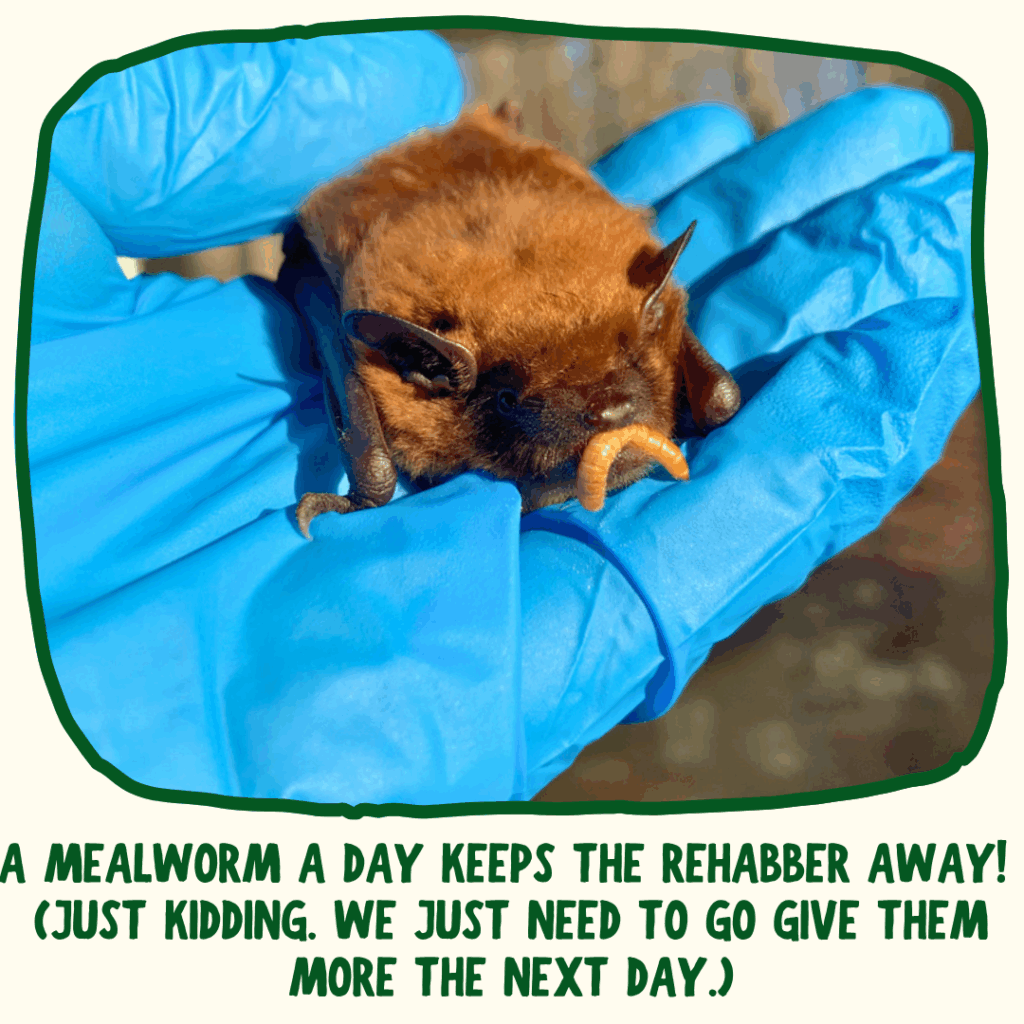
Pest Control Professionals
All of this bug-eating adds up in a big way for humans. Not only do bats control insect populations and reduce mosquito-borne disease transmission, but they help us people eat, too! Bats are estimated to save U.S. farmers between $3.7 to $53 billion by eating crop-damaging insects. They’re especially crucial for smaller organic farms that rely less on insecticides – of which there are many in Central Virginia. Those estimates don’t take into account the insects eaten by bats in forest ecosystems, though, or the importance of bats as plant and crop pollinators. The actual monetary value of bats to humans is incalculable, here and abroad. 💸
Speaking of insects — if you live in the Eastern United States, you’ve likely seen (and hopefully squished!) your fair share of Spotted Lanternflies. These pretty yet destructive bugs are extremely invasive and harm native forests and farms. Virginia’s wine country has been hit especially hard by these grapevine-loving pests. Lucky for us, a recent study out of New Jersey found that bats have started eating Spotted Lanternflies. Keep it up, bats!


Bat Population Struggles
Sadly, Virginia’s bats do face significant challenges. White-Nose Syndrome (WNS), caused by a fungus accidentally introduced to North America in 2007, has devastated hibernating species. The fungus harms bats during hibernation, causing them to wake up too often and burn through fat reserves when no food is available. WNS swept through Virginia in the early 2010s, killing up to 95% of bats in some affected colonies. 😞 We simply have far fewer bats today than we did just 20 years ago, and with a slower reproductive rate of just one or two pups per year, our bat populations have not even come close to recovering. Add in habitat loss, pesticide exposure, and climate instability, and it’s clear that bats are in trouble.
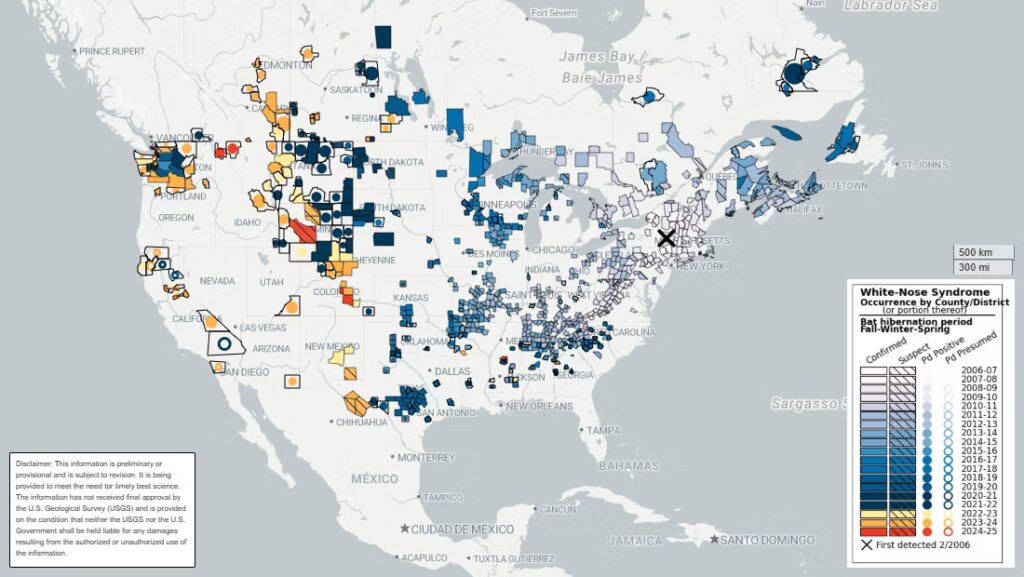
Considering these hurdles, we’re especially proud to rehabilitate orphaned bats at RWS. We even have a specialized flight enclosure just for bats! (Okay, we use it for flying squirrels when we don’t have bats in care. 😉) Every single bat we can return to the wild represents a tangible conservation win.
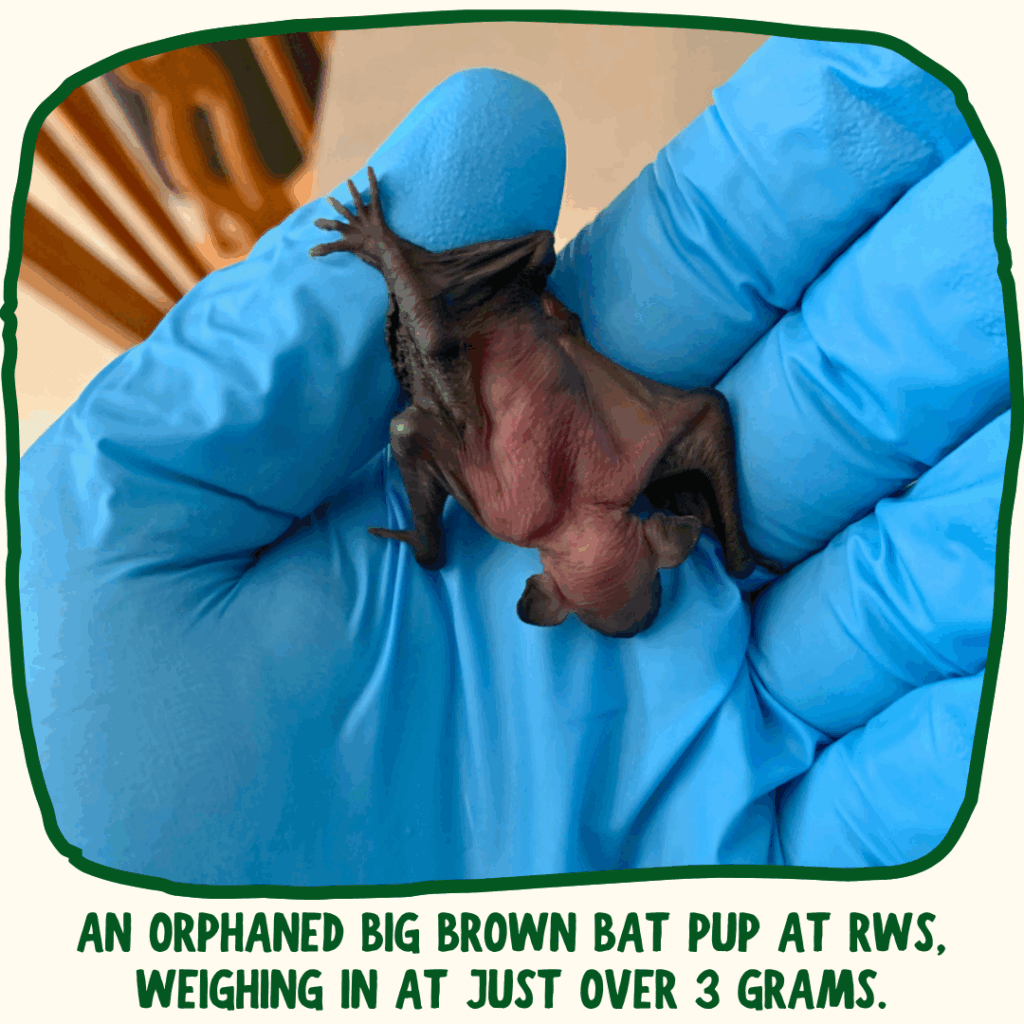
How YOU can help bats!
Good news: you can help bats from home without having to feed tiny pups every two hours like we do during pup season. 😆 Consider some of these tips:
- 🫡 Respect hibernation sites. Don’t explore caves during the winter months, especially if it’s a known hibernaculum.
- 🥾 Clean gear and boots any time you do go caving to prevent spreading WNS. The National Speleological Society offers great resources on proper gear decontamination methods.
- ❌ Ditch the pesticides. Poisoned insects lead to poisoned bats. Not only does this harm the bat, but recent evidence indicates that certain pesticides impact bat immune systems and could intensify the risk of disease transmission.
- ⏰ Time bat exclusions appropriately. If you have bats in your attic that you’d like to evict, we understand! The best method to kick out your unwanted roommates is called exclusion. A licensed professional can examine your home and install a one-way door over wherever bats are exiting, preventing them from getting back in. However, bat exclusion should be practiced before they begin roosting in the spring or right after they leave in the fall, which prevents disrupting bat pupping in late spring and early summer.
- ♥️ Support bat rehabilitation and education! Giving to RWS and to our fabulous partner organizations, like Bat Conservation & Rescue of Virginia, helps us treat more orphaned bat pups and reach new audiences with our educational initiatives.
One other excellent way to help bats recover from the impacts of WNS and habitat loss is to install a high-quality bat house on your property. 🏠
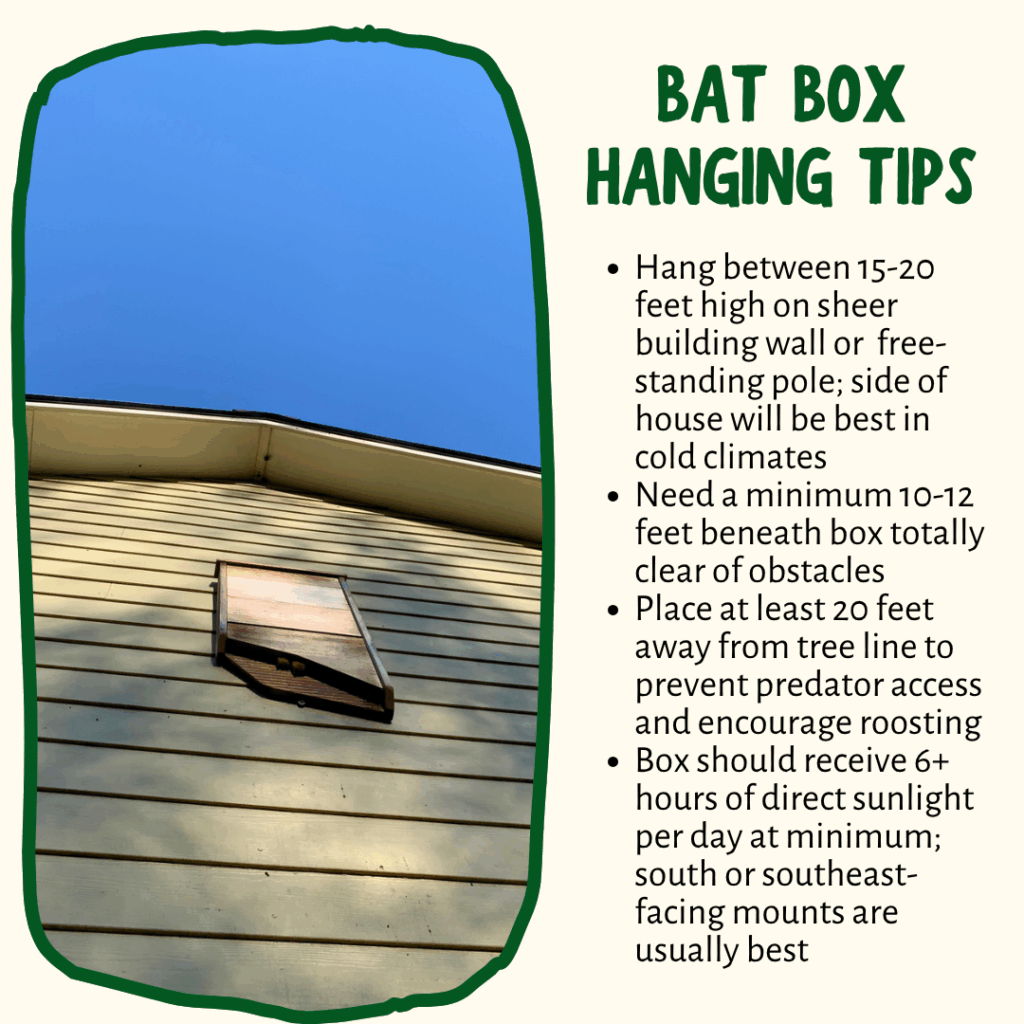
We have a BatBnB house at RWS, and the “locals” love it. We have so many Big Brown Bats stuffing themselves in there that some hang out of it during the day. Others have moved to sleep under our porch signage! Once they take off for their hibernation location, we’re going to reinstall a much bigger house in our garden for all of the locals to enjoy. 🦇
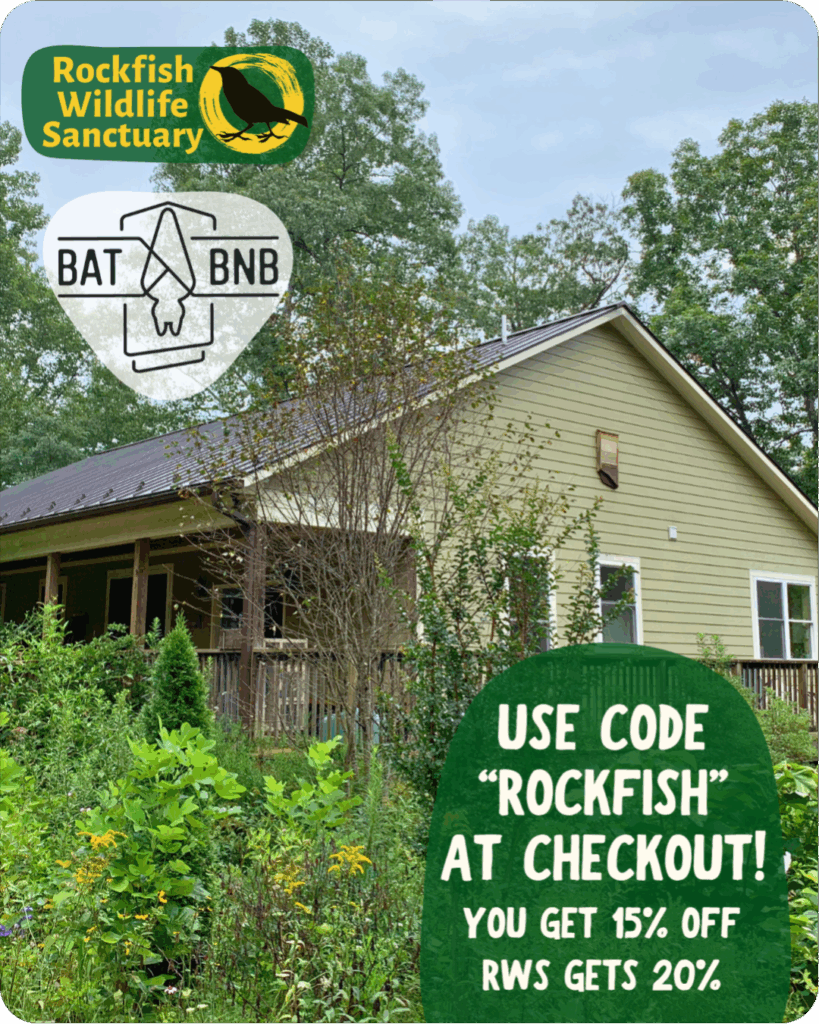
We have a special partnership with BatBnB. Enter code ROCKFISH at checkout, and you’ll get a discount on your beautiful new bat house — and RWS will receive a donation from BatBnB!

Despite the myths, bats play a vital ecological role in Virginia and beyond. They keep our ecosystems balanced, our bugs in check, and our nights alive with wingbeats and wonder.
This Bat Week, we hope you’ll join us in giving these misunderstood marvels the credit and care they deserve! 💕
Want to celebrate all the amazing creatures that inspire our work? 🎉
Join us at the Sanctuary Soirée on November 14th at Pollak Vineyards! Tickets are going fast. Grab yours today before we go batty trying to count down the days! 🥂
October 29, 2025
Published:
Be the first to comment!